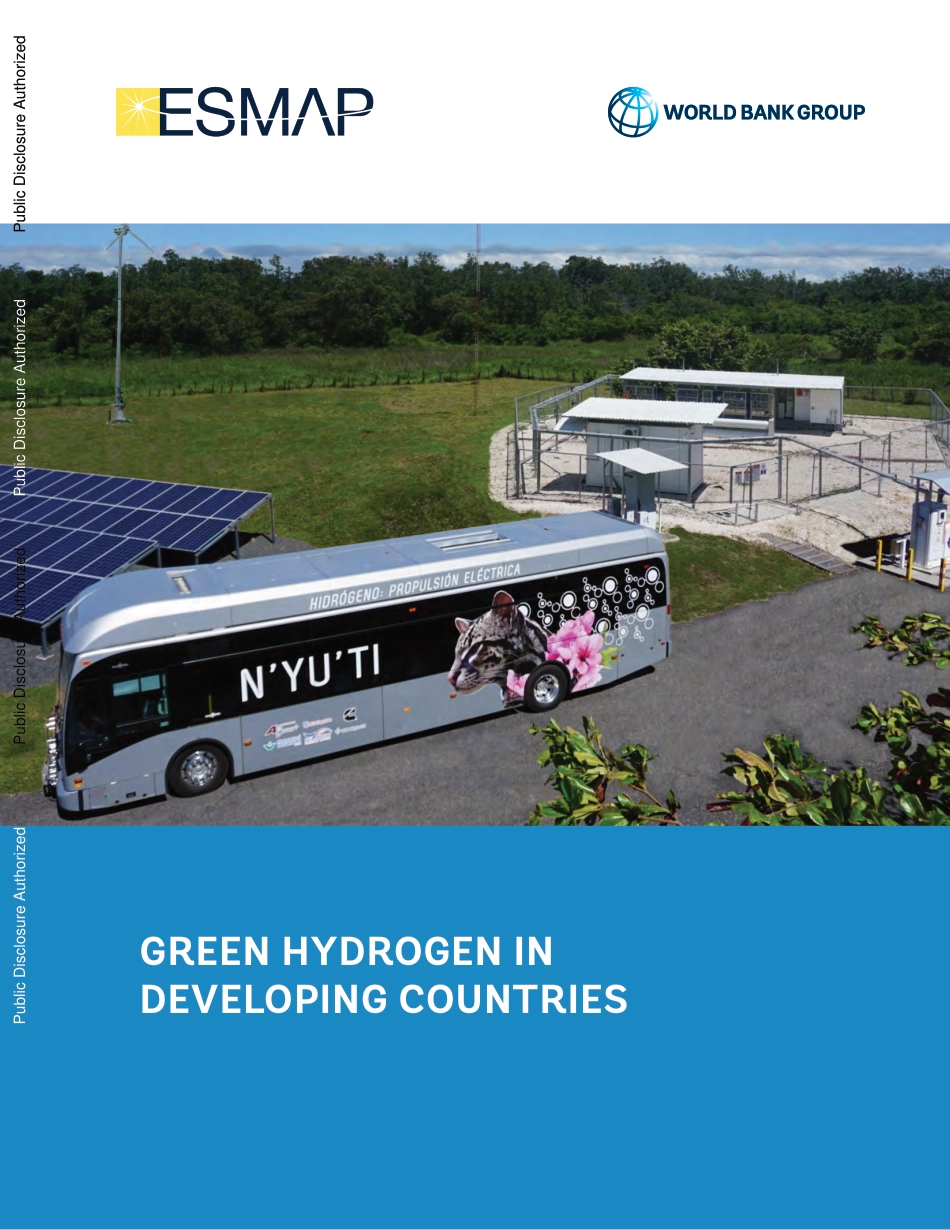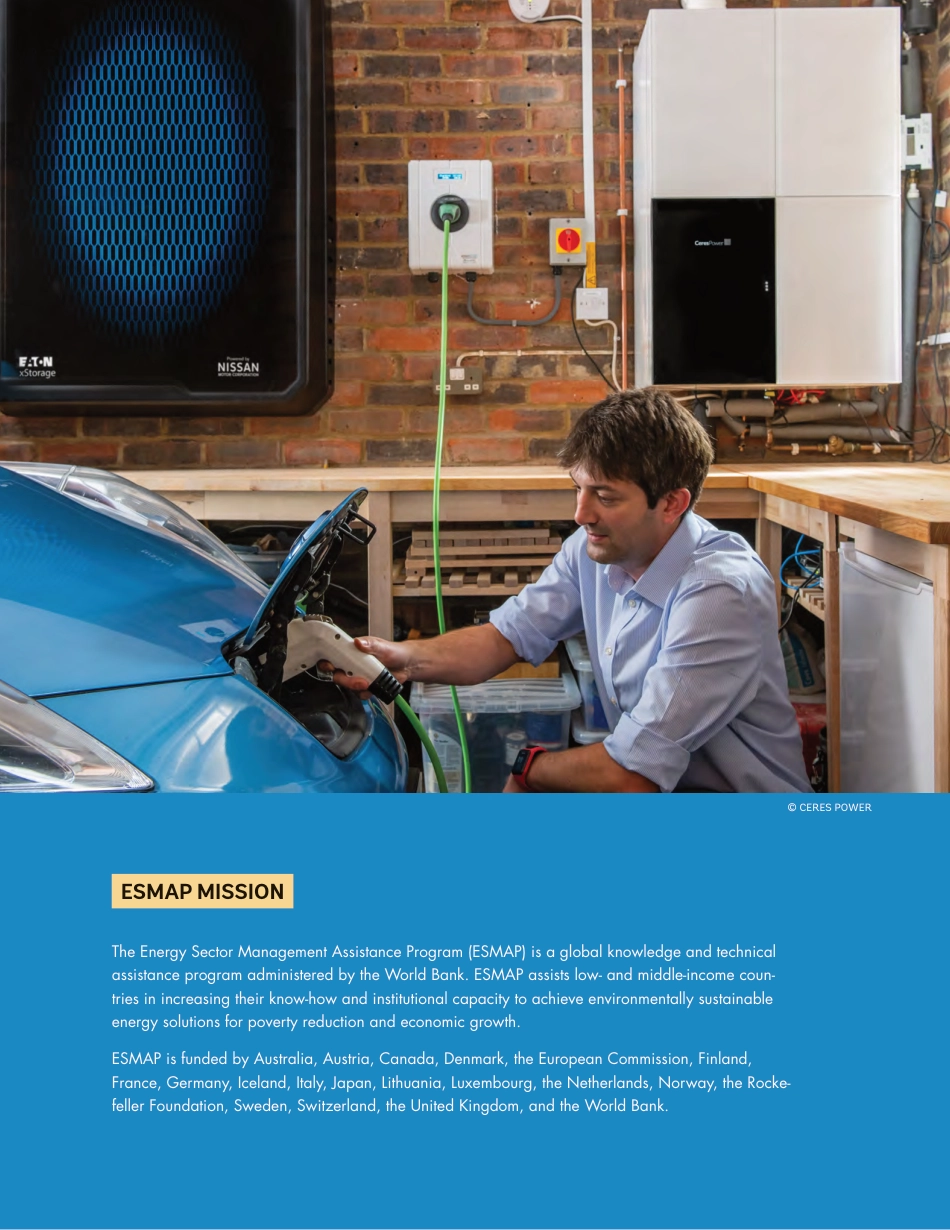GREEN HYDROGEN IN DEVELOPING COUNTRIESPublic Disclosure AuthorizedPublic Disclosure AuthorizedPublic Disclosure AuthorizedPublic Disclosure AuthorizedGREEN HYDROGEN IN DEVELOPING COUNTRIESiiThis report was researched and prepared by staff and consultants at the Energy Sector Management Assistance Program (ESMAP), part of the World Bank. The work was funded by ESMAP and the World Bank. The authors and main contributors to the report were Fernando de Sisternes (Task Team Leader and Energy Specialist, ES-MAP) and Christopher Jackson (Consultant, ESMAP). The authors thank peer reviewers Demetrios Papathanasiou (Practice Manager, World Bank), Rafael Ben (Energy Specialist, World Bank), Peter Mockel (Principal Industry Specialist, IFC), Pierre Audinet (Lead Energy Specialist, World Bank), Manuel Millan (Senior Energy Special-ist, World Bank), Gabriela Elizondo (Senior Energy Specialist, World Bank), Daniel Roberts (CSIRO), Jenny Hayward (CSIRO), Chris Munnings (CSIRO), and Jenifer Baxter (IMechE), who gave their time and comments to drafts of this report. The authors wish to express their gratitude to Rohit Khanna (Practice Manager, ESMAP), Zuzana Dobrotkova (Senior Energy Specialist, ESMAP), Ivan Jaques (Senior Energy Specialist, ESMAP), Sandra Chavez (Consultant, ESMAP), and Elizabeth Minchew (Associate Operations Officer, IFC) for their valuable comments throughout different stages of this report. The authors also wish to thank Marjorie Araya (Program Assistant, ESMAP), Pauline Chin (Senior Program Assistant, ESMAP), and Melissa Taylor (Program Assistant, ESMAP) for their invaluable support, and Ashley Young (Publications Professionals), Linda Stringer (Publications Professionals), Marcy Gessel (Publications Professionals), and Debra Naylor...



